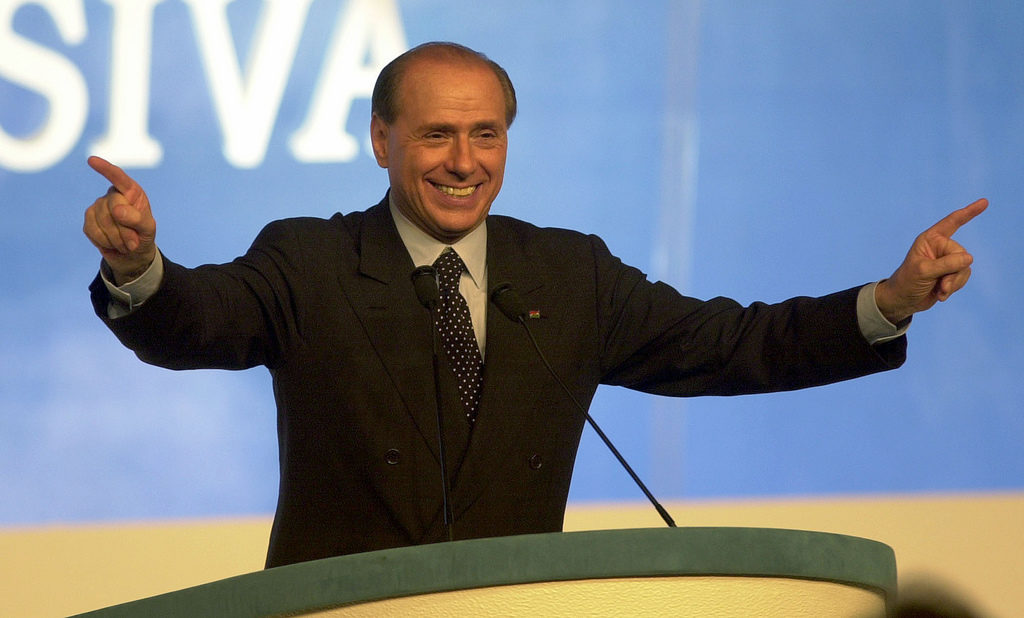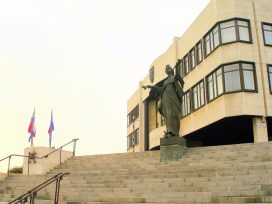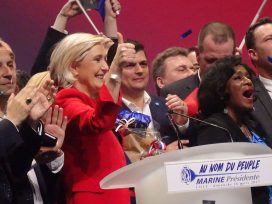Let us dispense with a particular piece of ahistorical nonsense that has been peddled with vigour over the past weeks and months. Namely, that the phenomenon that has come to be known as “post-truth” is a function of our global immersion in a digital media environment dominated by social networks.
It’s not only that fake news is as old as journalism itself, proliferating as it did in the nineteenth century through such spectacular examples as the New York Sun’s “Great Moon Hoax”, or Hearst and Pulitzer’s campaign to foment the Spanish-American war; nor the fact that what is known more precisely as propaganda was a key instrument in the rise of fascism, long before the invention of the transistor. It’s also that in much more recent times, with the television and print media industries seemingly in perfect health and at the peak of their fact-establishing powers, it was possible for a political movement operating in a liberal western democracy to manipulate public opinion to a similar, if not greater, degree as we have witnessed during the campaigns for Brexit and Donald Trump.

Silvio Berlusconi was the third longest-serving prime minister in Italian history, after century-old liberal Giovanni Giolitti and – naturally – Benito Mussolini. Yet his decision to “take the field” a mere two months out from the election of 1994 was greeted with a mix of scepticism and derision. The move, announced via a 10-minute speech delivered by VHS to the national media, appeared both hasty and hopelessly belated. The name of Berlusconi’s new party, Forza Italia – literally, “Go Italy!” – seemed puerile, as did the party’s football-like anthem. Berlusconi’s use of language, consisting of simple, direct appeals to emotion over reason, was the opposite of what the public had become used to from its political class. It sounded ill-fittingly foreign. It sounded American.
Berlusconi was stepping in to fill a vacuum, as centre-right parties had suffered after three years of devastating corruption scandals. Victory for the left-wing coalition, collectively known as “the Progressives”, appeared inevitable. Yet, after decades spent in opposition to the ruling Christian Democrats, those same parties tried to paint themselves not as a force of renewal rushing to rescue the nation from a corrupt government, but rather as the guarantors of an orderly continuity with the old regime. Business leaders were duly reassured that the coalition-leading Democratic Party of the Left – the former Communist Party – would not initiate a programme of radical industrial, economic or institutional reform. The same non-threatening principles of good government that the communists had long practised at a local level in the many cities and regions in which they had a majority would be scaled up nationally. At any rate, that was the apparent strategy. Its most immediate consequence, however, was to allow Berlusconi to articulate one of the central claims of his campaign: that the communists had been part of the government for the previous 50 years.
Like many post-truths, this one too was soaked in irony: Berlusconi had personally benefited from ad hoc laws passed by successive governments to allow him to expand his media empire against the limits set by the constitution; and in most respects he was the explicit, unapologetic heir of the Christian Democratic half-century. To make matters more convoluted, at the same time as he was claiming that they had acted as a sort of shadow government, Berlusconi repeatedly accused his opponents of having conspired with communist judges to bring down the actual government and wipe entire parties off the political map.
Even greater depths of irony lay in Berlusconi’s choice of allies. Forza Italia couldn’t win by itself, but needed the support of both the nationalist, post-fascist Alleanza Nazionale of Gianfranco Fini, and the separatist, xenophobic and anti-Southern Lega Nord of Umberto Bossi. The ultimate objectives of those two forces were in open contradiction with one another, but the prospect of keeping the “reds” out of power and seizing it for themselves made them unlikely allies.
Both parties were steeped in historical fantasy and revision. Alleanza Nazionale was in the process of transitioning from the party of the nostalgics of fascism into a modern, respectable – if decidedly forgetful – party of the European right; while Lega Nord, in its brief decade of existence, had already developed a complex and utterly fake set of festivals and customs centred around the quasi-mythical mediaeval figure of Alberto da Giussano, in an elaborate attempt to both manufacture and embody the common heritage of the “people of the North”.
Berlusconi’s irruption gave not only legitimacy to those competing and previously marginal supremacist movements, but also a shot at political office that none of the three forces could achieve separately under the new, no longer proportional electoral system.
Each party was founded on a false claim of one kind or another; in Berlusconi’s case, several. Together, they succeeded not because of a unique and new media environment, but rather because a broader set of political and social conditions existed that made it possible for Italian people to believe in some or all of those claims.
In important respects, post-war Italian politics had always been marked by a clash of competing and mutually exclusive realities. Consigned by the Yalta accords to the western bloc, the country was home to the largest communist party this side of the Iron Curtain. This is the mass-membership organisation that, in a famous 1974 article for Il Corriere della Sera, Pier Paolo Pasolini called “a clean country in a dirty country, an honest country in a dishonest country, an intelligent country in a foolish country, an educated country in an ignorant country, a humanistic country in a consumerist country”. Well into the 1970s, the citizens of this country-within-a-country were told to keep their eyes fixed on revolution, and to orient their view of history and everyday politics accordingly. The party’s official newspaper, L’Unità – “founded by Antonio Gramsci”, as a line under the masthead proudly proclaims to this day – could be trusted to report the news factually and interpret it correctly.
The Christian Democrats and their chief allies, the Socialist Party, had official newspapers of their own. Later, under a peculiar power-sharing agreement, each of the three major parties came to control one of the state television channels. While the country’s two largest newspapers were unaffiliated, Italians had long been used to regarding information as being politically filtered, and explicitly so.
Does this already qualify as post-truth? Perhaps. But Berlusconi introduced a step-change. His spokespersons were not merely partisan, but brought partisanship into areas of public life that hadn’t been directed towards propaganda since Mussolini’s times. In the days leading to the March 1994 election, the hosts of several entertainment shows on Berlusconi’s television channels, including household names such as Mike Bongiorno and Raimondo Vianello, as well as the very popular teenage entertainer Ambra Angiolini, made unprecedented on-air appeals to vote for their boss, while the football team owned by Berlusconi, AC Milan, was deployed simultaneously as the symbol of his entrepreneurial success and the harbinger of his political rise.
From a rhetorical standpoint, Berlusconi understood that people had tuned out the phraseology of the old political class. While the Progressives – besides engaging in a questionable revisionism of their own in the shedding of the old communist symbols – made no effort to update their language, he introduced the market-oriented style of American campaigning to the staid Italian context. His chief slogan, “For a new Italian miracle”, will undoubtedly remind you of Trump, but his obsessively repeated promise – that he would create “one million new jobs” – was even more effective in appearing to articulate a concrete policy whilst being utterly devoid of content. What jobs? In which industries? How?
Berlusconi simply refused to be challenged on those finer points. He knew that all he needed to do was to repeat his slogans often enough. He also knew that the mix of shock and outrage that surrounded his entry – there were well-founded doubts that a person whose business dealings were so broad and depended to such a large extent on public concessions could legally run for office – would guarantee that the election, previously billed as the country’s transition into a second republican phase, would be entirely about him. And on those grounds, the consummate salesman knew he could win.
Populist politics isn’t about facts or truth, much less policy. A populist politician must above all forge a connection with the public; persuade voters that he – for it’s nearly always a he – sees the world the same way they do and speaks the same language as them. Mastering this art is what enabled Berlusconi and Trump, two highly leveraged but nonetheless obscenely rich tycoons, to commune with ordinary people and appear to share in their trials and aspirations.
Defying all rational explanation, millions of Italians came to identify with Berlusconi’s personal success. He alone seemed to grasp that this identification had quasi-religious connotations, leading him to claim without apparent irony that he had been “anointed by the Lord”, or later still that he was l’uomo della provvidenza, “the chosen one” – the phrase that Pope Pius XI had used to describe Mussolini. The promise of a “new Italian miracle”, a reference to the economic boom of the 1950s and 60s, also invested the figure of the leader with superhuman, godlike powers.
This was 1994, when all the information that Italians received on public affairs came from print and electronic mass media. And while it’s true that Berlusconi had direct control of three national television channels, one newspaper and one magazine, tilting the playing field to a constitution-defying degree, it’s also true that this still amounted to a minority of the media, and did not include the most watched television newscasts and most of the largest circulation print titles.
But between the sources that lionised him and the sources that focused all of their attention on the explosive, controversial nature of Berlusconi’s candidacy (here again the comparison with Trump is obvious), soon everyone was playing into the hands of a challenger whose greatest fear was to be treated as an ordinary politician, subject to ordinary levels of criticism and scrutiny.
Thriving from the attention and even more so from being cast as the outsider in spite of his entrenchment in the nation’s elite networks and his decade-long support for the recently disgraced government, Berlusconi was allowed to set the agenda of the campaign and, in the process, to impose his own narrative over the nation’s political history. His eventual victory – almost two months to the day after entering the fray and heading a coalition of seemingly irreconcilable extremists – strikes the reader of history, who benefits from hindsight, as the almost inevitable outcome. It was utterly shocking at the time.
On 28 March 1994, many Italians woke up in a country they suddenly struggled to recognise. There is nothing virtuous about such bewildered reactions, but watershed elections can serve the function of sharply updating our collective sense of who we are. At such times one’s own polity may suddenly seem alien, uncaring. Social actors whose behaviours seemed predictable are suddenly opaque, while the decisions of political actors provoke different reactions than in the past. Language itself seems inadequate to describe the new reality.
All of this is post-truth, at least for the people who lived by the old order. When the ideological assumptions of a society are shaken, so are the parameters by which it determines what counts as a socially relevant fact. Think of how differently the notion of “news” might have been conceived under Czar Nicholas and after the October Revolution, or in an agrarian society compared to an advanced capitalist one.
Journalists play a role in this, as the professionals principally in charge of gathering and reporting on said facts. But the structure of the media and its modes of consumption and reception are determined by social factors as well. News of social unrest before the advent of modern media might have travelled from city to city and from country to country through informal networks and person-to-person communication. Nowadays, those networks are being replicated in a different medium, competing with more authoritative sources of information.
Most facts which pertain to the political sphere aren’t ideologically neutral, either. There is no inherent facticity of which qualified information specialists can serve as guarantors. Think of how the Church in Europe used to exert its authority over what counted as scientific fact at the time, or about the intense – and fundamentally political – debate that surrounds climate change today, in spite of the consensus within the scientific community. This is why the practice of “fact-checking” didn’t stop Trump, nor hinder Berlusconi, nor push the Brexit bus off the road. In each of those moments, journalistic or forensic truth bent to more powerful narratives.
The historical conditions that favour the rise of populisms can be quite different, but all involve a crisis of the political and social institutions that together produce the rules by which events are judged to be factual – be they the media, the courts, academia, government statistics or the church. Rarely the crisis of one of those institutions will happen in isolation from the others. “Post-truth” describes an environment in which the rules are broken, or different actors operate by different and utterly incompatible rules.
The current crisis of traditional mainstream media no doubt plays into this, but it too has political and ideological causes: most notably, the refusal or failure to regulate digital media, and to develop standards of conduct around the dissemination of news by new players such as Facebook and Google.
If there is a lesson in the rise of Berlusconi, it’s that his post-factual edifice was partially exposed, but only after his political project had exhausted itself. Then and only then – once the ordinary people whose material conditions he had failed to improve could measure his promises against the outcome of his policies – did some of the financial and personal scandals finally catch up with him and put an end to his political leadership. However, the country is no less primed for populism now than it was before Berlusconi, as many others are across Europe and beyond.
If, in spite of grasping its deep roots, we insist on calling this a “post-truth era”, we must do so without nostalgia for a time when facts seemed less problematic or contested. What is required of us above all is the social imagination necessary to produce new and more resilient democratic institutions with which to report on our world.







